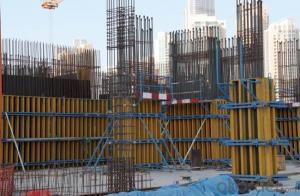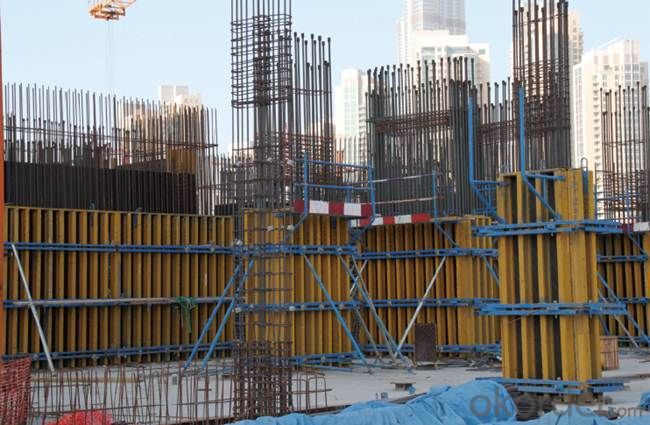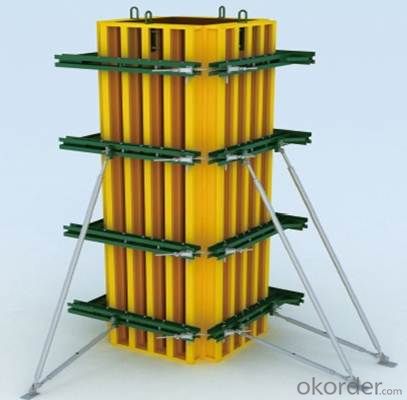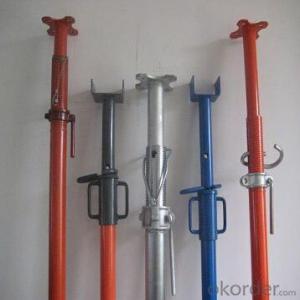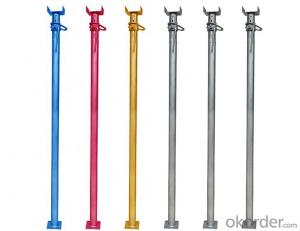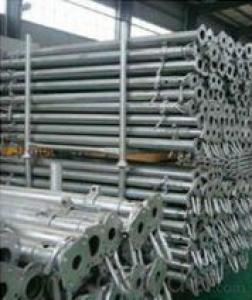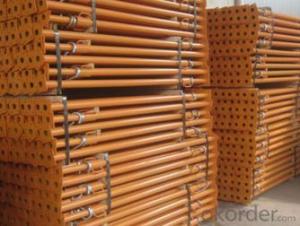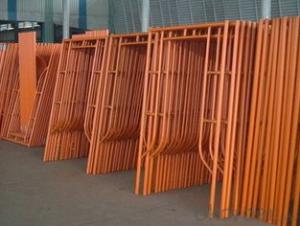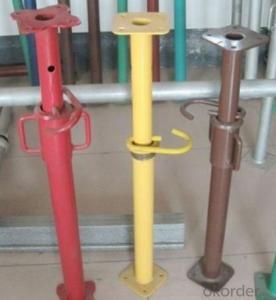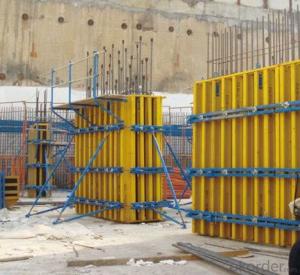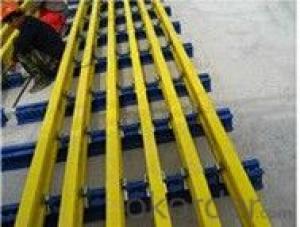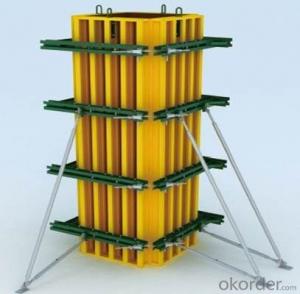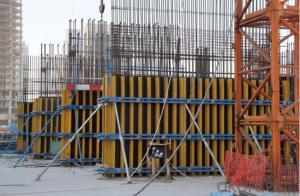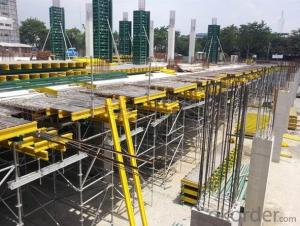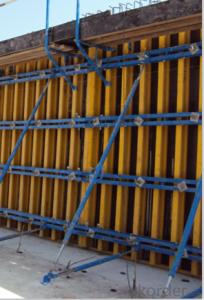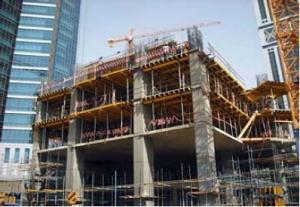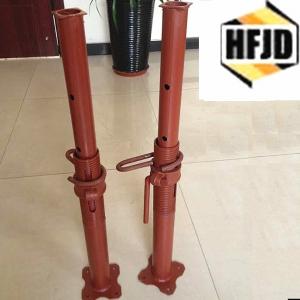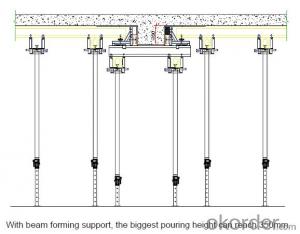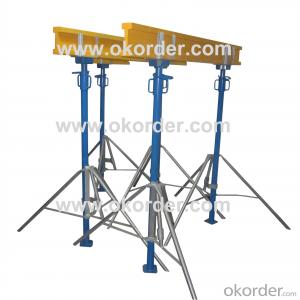Timber beam wall and column formwork
- Loading Port:
- China Main Port
- Payment Terms:
- TT OR LC
- Min Order Qty:
- -
- Supply Capability:
- -
OKorder Service Pledge
OKorder Financial Service
You Might Also Like
Timber beam wall formwork
Timber beam wall formwork is used for the concrete pouring of wall. The application oflarge areas formwork has greatly increased
the construction efficiency and reduced the cost. The system is convenient for construction and it is easy tocontrol the quality.
The system has two parts, formwork and pull-push props.The formwork is made of plywood, timber beam and steel waling. Pull-push props can be designed according to the project or simply select the standard props.Tie-yoke and tie rod are used to reinforce
the corner.

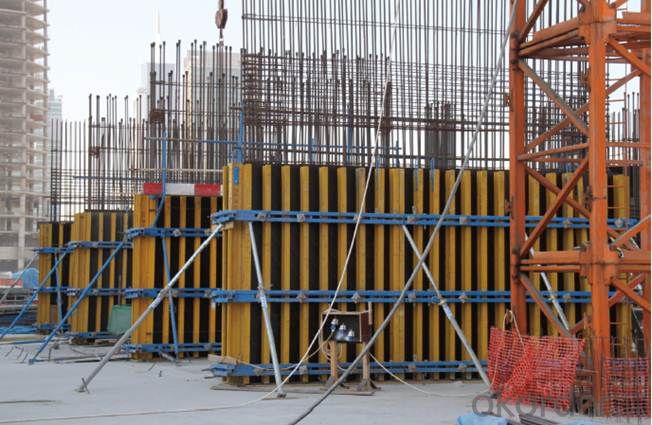
- Q: What are the common challenges when using steel props?
- When utilizing steel props in construction projects, various common challenges may arise. One of the primary concerns is ensuring the proper installation and alignment of the props. To provide adequate support for the structure, accurate measurement and positioning of the props is crucial. Any errors or miscalculations during installation can result in instability and potential collapse. Another obstacle pertains to the weight and bulkiness of steel props. Their transportation and maneuverability can be challenging, particularly in confined spaces or on uneven terrain. Consequently, this can impede the construction process, necessitating additional labor or equipment to safely handle the props. Steel props are also susceptible to corrosion and rust, particularly in humid or wet environments. Regular maintenance and inspection are essential to maintain the props' good condition and reliable support. Failure to address corrosion can weaken the props, compromising their structural integrity. Moreover, steel props may not always be suitable for specific construction applications. They have limitations in terms of load capacity and height adjustment. If the weight or height requirements surpass the props' capabilities, alternative support systems may need to be implemented. Lastly, cost can pose a challenge when employing steel props. The purchase or rental expenses can be relatively high, especially for long-term projects. Additionally, the costs associated with transportation, maintenance, and storage should be factored into the budgeting for steel props. In conclusion, while steel props are commonly used in construction projects, they present their own unique challenges. Proper installation, handling, maintenance, and cost management are vital factors in successfully utilizing steel props in construction.
- Q: Are steel props suitable for supporting mezzanine floors?
- Mezzanine floors can be supported effectively by steel props. Known as adjustable steel columns or steel shores, these props are robust and durable, capable of withstanding substantial weight. They are commonly utilized in construction projects to offer temporary or permanent support to various structures, including mezzanine floors. Mezzanine floors are intermediate floors constructed between the main floors of a building, typically used to create additional space or storage. To ensure the safety and stability of the structure, these floors necessitate strong and reliable support. Steel props are ideal for this purpose due to their strength, load-bearing capacity, and adjustable height feature. Steel props possess the ability to be effortlessly adjusted to attain the desired height, making them versatile and suitable for a range of mezzanine floor heights. Moreover, they can be easily installed and dismantled, providing flexibility and facilitating easy reconfiguration of the mezzanine floor layout. In addition to their strength and adjustability, steel props exhibit resistance to fire, rot, and corrosion. This renders them a dependable choice for supporting mezzanine floors in various environments, encompassing industrial, commercial, and residential settings. Nevertheless, it is crucial to seek guidance from a structural engineer or construction professional to ensure compliance with the specific design and installation requirements of the mezzanine floor. Factors such as load capacity, spacing, and bracing requirements will be taken into account to determine the appropriate size and quantity of steel props required for optimal support. To summarize, steel props represent a suitable and dependable option for supporting mezzanine floors. Their strength, adjustability, and ability to withstand various environmental factors make them an ideal choice for ensuring the stability and safety of mezzanine floor structures.
- Q: Steel support, mixed soil support, calculation method?
- Consolidation support, hinged support according to the structure, rigid support
- Q: What are the main maintenance requirements for steel props?
- Regular inspections, cleaning, and lubrication are the primary maintenance requirements for steel props. Periodic inspections should be carried out to detect any signs of damage or wear, such as cracks, bends, or other structural issues. Any props that are found to be damaged or worn should be promptly replaced to ensure safety and prevent accidents. Cleaning is also an important aspect of maintaining steel props. They should be regularly cleaned to remove dirt, grime, and other accumulated contaminants. This can be accomplished by using a mild detergent or soap and water solution, followed by thorough rinsing and drying. It is crucial to avoid using abrasive materials or harsh chemicals that could harm the props' surface. Lubrication is crucial as well. The moving parts of the props, such as adjustable pins or screws, should be lubricated periodically to ensure smooth operation and prevent rusting. A lubricant specifically designed for steel or metal surfaces should be utilized, and any excess lubricant should be wiped away to prevent the accumulation of dirt or debris. Proper storage is also essential for maintaining the longevity of steel props. They should be stored in a dry and well-ventilated area to prevent rust or corrosion caused by moisture and humidity. If the props are not in use for an extended period, they should be stored upright to prevent bending or warping. By adhering to these maintenance requirements, steel props can be kept in optimal condition, ensuring their durability, safety, and longevity.
- Q: For the deep foundation pit supporting steel purlin supporting scheme of a
- The steel sheet pile is inserted into the steel sheet pile: the first pile is inserted into the continuous steel sheet pile and is inserted into the design depth of the steel sheet pile supporting system of the foundation pit along the front pile buckle grooveSteel plate pile construction setting allow error: pile top elevation deviation + 100mm steel plate pile axis deviation + + 100mm steel plate pile verticality deviation 1%; should be monitored in the allowable error rangeSteel plate piles with steel sheet pile, pile deviation, making itself the error limitation of construction to ensure the actual degree of steel sheet pile curtain according to the standard width of the integer times of steel sheet pile curtain end closed up by the difficulty of adjustment phase do like profiled steel sheet pile closure or through adjusting curtain axis using standard pile to achieve closure due to the engineering precision of sheet pile wall the realization of high angle closure of the corner on both sides of the 10 sheet pile width adjustment axis to achieve closure is Department of steel sheet pile by welding of foot like fish plates for welding to avoid two adjacent pile connected with the depth of 1M and the appropriate position should be connected to the wrong place pile spacing
- Q: Are steel props adjustable in height?
- Yes, steel props are adjustable in height. Steel props, also known as steel acrow props or telescopic props, are commonly used in construction and temporary support systems. They are designed to provide temporary support to structures, such as walls, beams, or slabs, during construction or renovation. One of the key features of steel props is their ability to be adjusted in height. This allows for flexibility in adapting to various construction requirements. The props consist of an inner tube and an outer tube, which can be extended or retracted to achieve the desired height. The adjustment mechanism typically involves a pin or a screw system that allows for easy and secure height adjustment. To adjust the height of a steel prop, you need to loosen the locking mechanism, extend or retract the inner tube to the desired height, and then lock it in place. This adjustability feature makes steel props versatile and adaptable to different construction scenarios. Furthermore, the adjustable height feature of steel props ensures that they can be used in different stages of construction, where the height requirements may vary. They can be easily extended or shortened as needed, providing stability and support throughout the construction process. In summary, steel props are indeed adjustable in height, making them a valuable tool in the construction industry for providing temporary support and stability to structures during construction or renovation projects.
- Q: What are the common safety certifications for steel props?
- The common safety certifications for steel props include the following: 1. CE Marking: This certification ensures that the steel props comply with the European Union's health, safety, and environmental protection standards. It signifies that the product meets the essential requirements for safety and performance. 2. EN 1065: This European standard specifies the requirements and test methods for adjustable steel props used in temporary structures. It ensures that the props are capable of safely supporting loads and are resistant to bending and buckling. 3. ANSI/ASSE A10.9: This American National Standard provides guidelines for the design, installation, inspection, and use of steel prop scaffolding systems. It ensures that the props are properly constructed and maintained to ensure worker safety. 4. OSHA Compliance: The Occupational Safety and Health Administration (OSHA) sets safety standards for the construction industry in the United States. Compliance with OSHA regulations ensures that steel props meet the necessary safety requirements for construction sites. 5. ISO 9001: This certification signifies that the manufacturer has implemented a quality management system and follows strict quality control procedures. It ensures that the steel props are consistently produced to meet customer requirements and adhere to safety standards. These certifications help to ensure that steel props are manufactured, tested, and used in a safe and reliable manner, reducing the risk of accidents and promoting worker safety on construction sites.
- Q: How do you ensure proper stability when using steel props on inclined surfaces?
- To ensure proper stability when using steel props on inclined surfaces, there are several important steps to follow: 1. Assess the angle of the inclined surface: Before setting up the steel props, it is crucial to accurately determine the angle of the inclined surface. This can be done using a leveling tool or a laser level to ensure precise measurements. 2. Select appropriate steel props: Choosing the right steel props is essential for stability. Ensure that the props have a suitable load-bearing capacity to withstand the weight and forces exerted on them due to the incline. Consider using adjustable props that can be extended or shortened as needed to accommodate the slope. 3. Position the props correctly: Proper positioning of the steel props is crucial for stability. Place the props at regular intervals along the inclined surface, ensuring that they are securely planted into the ground or a stable base. 4. Provide additional support: In some cases, additional support may be necessary to enhance stability. This can be achieved by using bracing or struts to connect the steel props and distribute the load more evenly. Bracing can help prevent any lateral movement or tilting of the props. 5. Use appropriate base plates: Base plates are essential for distributing the load of the props evenly and preventing sinking or sliding. Ensure that the base plates are securely attached to the props and that they have a large enough surface area to provide stability on the inclined surface. 6. Regularly inspect and maintain the props: Regular inspections of the steel props are necessary to ensure they remain in good condition and are not compromised by any wear, damage, or corrosion. Any signs of instability or weakness should be addressed immediately, and damaged props should be replaced promptly. 7. Seek professional advice if needed: If working on a particularly challenging or complex inclined surface, it is advisable to consult with a structural engineer or construction professional to ensure the correct methods are employed and that the stability of the props is guaranteed. By following these steps, you can ensure proper stability when using steel props on inclined surfaces, minimizing the risk of accidents or structural failures.
- Q: How to distinguish between the columns of single and double steel support
- The post section is consistent with the single column brace.The upper and lower sections of the column are not consistent, and the lower column is supported.
- Q: Are steel props suitable for supporting temporary sports or event structures?
- Yes, steel props are suitable for supporting temporary sports or event structures. Steel props are strong, durable, and adjustable, making them ideal for providing stable support for temporary structures such as grandstands, tents, stages, and other sporting or event-related installations. They can withstand heavy loads and provide reliable structural stability, ensuring the safety and integrity of the temporary structures.
Send your message to us
Timber beam wall and column formwork
- Loading Port:
- China Main Port
- Payment Terms:
- TT OR LC
- Min Order Qty:
- -
- Supply Capability:
- -
OKorder Service Pledge
OKorder Financial Service
Similar products
Hot products
Hot Searches
Related keywords
